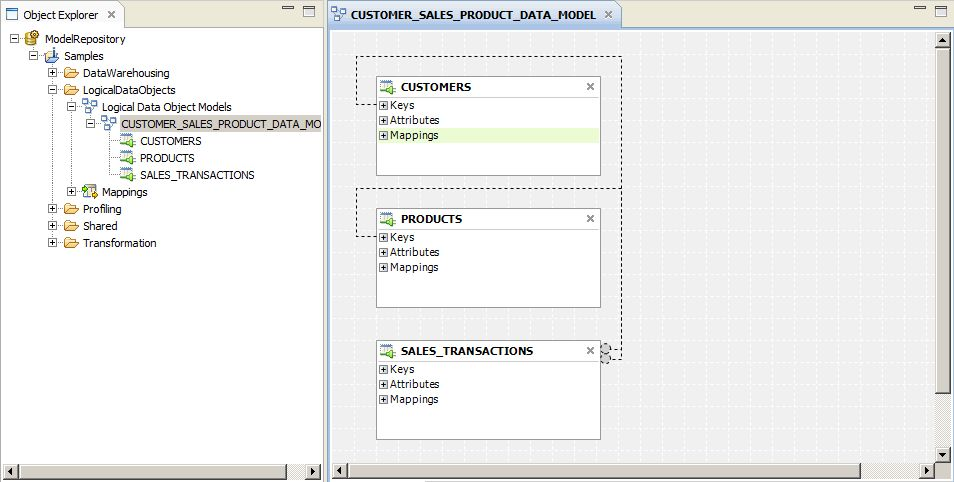Logical View of Data Overview
A logical view of data is a representation of data that resides in an enterprise. A logical view of data includes a logical data model, logical data objects, and logical data object mappings.
With a logical view of data, you can achieve the following goals:
- •Use common data models across an enterprise so that you do not have to redefine data to meet different business needs. It also means if there is a change in data attributes, you can apply this change one time and use one mapping to make this change to all databases that use this data.
- •Find relevant sources of data and present the data in a single view. Data resides in various places in an enterprise, such as relational databases and flat files. You can access all data sources and present the data in one view.
- •Expose logical data as relational tables to promote reuse.
The following figure shows a sample of related logical data objects:
Logical Data Object Model Example
Create a logical data object model to describe the representation of logical entities in an enterprise. For example, create a logical data object model to present account data from disparate sources in a single view.
American Bank acquires California Bank. After the acquisition, American Bank has the following goals:
- •Present data from both banks in a business intelligence report, such as a report on the top 10 customers.
- •Consolidate data from both banks into a central data warehouse.
Traditionally, American Bank would consolidate the data into a central data warehouse in a development environment, verify the data, and move the data warehouse to a production environment. This process might take several months or longer. The bank could then run business intelligence reports on the data warehouse in the production environment.
A developer at American Bank can use the Developer tool to create a model of customer, account, branch, and other data in the enterprise. The developer can link the relational sources of American Bank and California bank to a single view of the customer. The developer can then make the data available for business intelligence reports before creating a central data warehouse.

